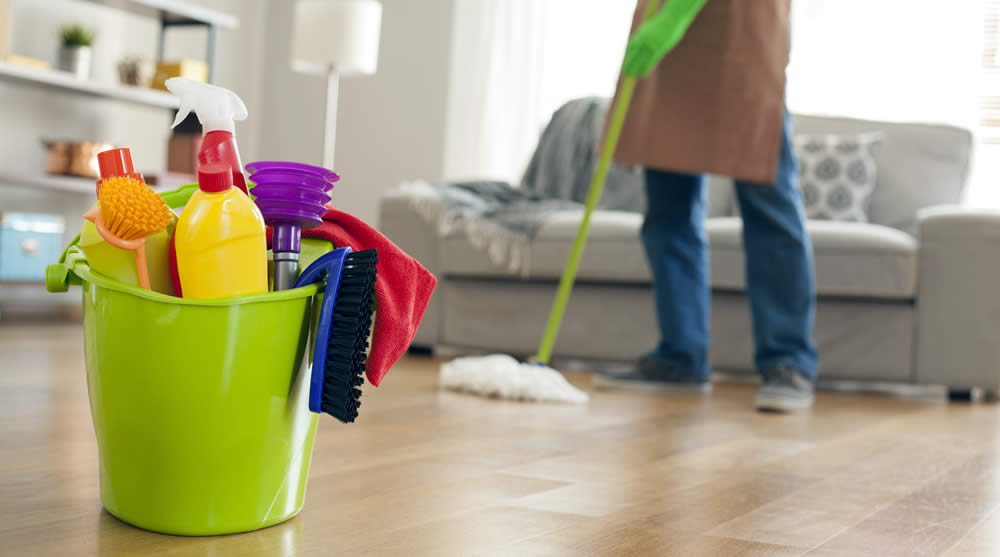Whether you’re looking for tips on how to clean a freestanding bathtub, or you’re wondering what steps to take to keep the drain and grout in your tub clean, this article will help you find the answers. It includes tips on how to clean the drain, as well as how to clean the grout and caulk in your freestanding bathtub.
How to Clean a Freestanding Bathtub
Keeping your freestanding bathtub sparkling clean is not difficult. However, you will need to be aware of the materials used to make the tub and follow the manufacturer’s instructions for cleaning it.
The first step is to remove all of the debris that accumulates on the floor around the tub. This can be done with an extendable dusting tool.
The next step is to scrub the surface. A damp cloth is sufficient, but a microfiber cloth will catch even the most stubborn of dirt. Alternatively, you can use a handheld shower head or a scrubber with a long handle.
For more stubborn stains and dirt, you can also try a solution of vinegar and baking soda. Allow the solution to sit for 30 minutes or so. This will help to remove stains and soap scum.
You can also use a microfiber cloth to wipe away dust from around the tub. This is the same technique you can use to scrub the inside of your tub. You can also try using a sharpened wooden stick to remove stubborn material.
Aside from the most obvious scrubbing, you can also try rinsing the bathtub to help prevent soap scum and mildew. You can also use bleach-based spray to remove mildew on the caulk around the tub. The scrubbing and rinsing will help to restore the luster of your freestanding bathtub.
Another trick is to use a vacuum extension to catch dust from beneath the bathtub. You can also use a handheld shower head to help you rinse the tub.
The best way to keep a freestanding bathtub clean is to follow a cleaning schedule. You should clean it at least once a week. This will help to keep the tub looking its best all year round.
What to Use to Clean a Freestanding Bathtub
Keeping your freestanding bathtub sparkling requires a regular cleaning routine. Freestanding bathtubs are made of acrylic, copper, or stone resin, and they can be susceptible to dirt and grime. If you want to clean your freestanding bathtub, keep in mind that you must first choose a cleaning solution that works for your specific tub.
First, read the label on the tub cleaner. Using a harsh cleaning solution on a freestanding tub can scratch and damage the surface. Instead, use a milder solution. For example, a dishwashing detergent like Dawn is effective at removing grime and dirt.
Once you have found a cleaning solution that works for your freestanding tub, follow the directions on the bottle to clean the tub. Rinse the tub thoroughly to remove soap and other residue.
A damp cloth can also be used to remove dust and dirt. You can also use a soft bristled brush to scrub in hard to reach places.
You may have to do a few test runs before you find the best cleaning solution for your freestanding bathtub. For example, you should first test a small area of your tub to ensure that the solution will not scratch or discolor the surface.
You can also remove stains with white vinegar. The solution should be applied to the stain and left for about thirty minutes. After the stains have been removed, rinse the tub and dry with a soft cloth.
You can also remove rust marks using water and borax. If the marks are not completely removed, repeat the process. This method is also useful for restoring the luster to older freestanding bathtubs.
For a really good clean, you can also use a combination of baking soda and hydrogen peroxide. This is particularly useful for removing stains, and it can also be applied to a tub ledge.
How to Clean Caulk From Your Freestanding Bathtub
Leaving the old caulking on your bathtub can result in moisture seeping behind the tile, causing mildew to grow. When you re-caulk the tub, you will need to replace the old caulk with a new one. Taking a few simple steps will make this job easy.
First, you will need to clean the surface of your tub. Use a damp cloth to wipe away dirt and dust. It is important to use a non-ammoniated cleaner. If the surface is stained, you may want to use a bleach and water mixture.
Second, you will need to soften the caulk. There are chemical and mechanical softening products available at your local hardware store. These products will soften the caulk so that it can be easily removed. Some caulks are more sensitive to temperature changes than others. If you find that the old caulk is hard to remove, you may need to use a heat gun or a chemical softener.
Third, you will need to remove any residue left behind by the caulk. If you don’t want to use a chemical softener, you can use rubbing alcohol or denatured alcohol. If you don’t have any of these products, you can also use mineral spirits. If you have leftover caulk residue, you can scour the surface with a scouring pad.
Fourth, you will need to use a sharp tool to remove the caulk. There are many tools that are designed specifically for removing caulk from a freestanding bathtub. These tools help to minimize damage to the tiles and shower surround.
You can also use a utility knife to cut through the caulk. You will need to be careful not to scratch the surface beneath it. You can also use a pointed scraper. This will remove small bits of caulk that may be stuck on the tiles.
How to Clean Grout From Your Freestanding Bathtub
Using a plastic ice scraper, a flat metal tool, and a bit of elbow grease, you can get your bathtub clean. Just make sure to be careful, though, and avoid scraping the surface of your tub.
For a light scrubbing, use a mixture of 1/4 cup bleach to one gallon of water. Rinse thoroughly after the solution has been used. You can also use bleach to clean caulk. This solution can also be used to remove mold or mildew.
Another method to clean grout is to use a baking soda and hydrogen peroxide paste. Apply the mixture to the grout lines, then scrub them with a sponge or brush. Rinse with clean water. You can also mix a small amount of lemon juice into the paste. You can add more baking soda, peroxide, or lemon juice if needed.
You can also use a foaming grout cleaner. You may need to let the cleaner soak for a while before you can use it. You can also clean caulk and grout using a bleach pen. Using this solution may corrode your pipes.
If you have a large mess, you may need stronger products. If you are unsure about using bleach, you can always test it out on a small inconspicuous area. You may also need to use a safety goggle to prevent bleach splatter in your eyes.
Finally, if you are not able to get your bathtub clean with these simple methods, you may want to consider using a commercial grout stain remover. Commercial products are usually specialized for the job. Some of these products may be harsher than other cleaning products, but they are safe to use.
How to Clean a Freestanding Bathtub Drain
Keeping a freestanding bathtub looking great requires a few simple steps. First, you need to clean the tub. It’s important to remove debris and soap scum. Once that’s done, rinse the tub. It’s also important to make sure the drain is clear. This can prevent future back ups and keep the plumbing working smoothly.
One way to clear a clogged tub drain is by using a plunger. It’s a common tool used by professional plumbers to unclog pipes.
A plunger works by creating a vacuum in the air. This vacuum helps to dislodge clogging items. After a few seconds, the clog should be free. Then, you can flush the drain. If the drain does not seem to have been cleaned completely, you may need to unscrew the drain opening.
Another method to clear a clogged drain is by using a drain snake. It’s a long piece of silicone cable that hooks up to objects and unclogs the drain. They are available at most home improvement stores. You can also use a pipe wrench.
Another method for unclogging a bathtub drain is to remove the stopper. Sometimes the stopper will become stuck or damaged. Using pliers, you can remove the stopper.
A hair removal tool can also be used to clear a clogged drain. You can also use a wire hanger to fish out hair. You can also move the tool around to grab loose hair.
Another method to clear a scummy drain is by flushing the drain with baking soda and vinegar. You can also use hot water to flush the drain. This is best done once a week, to remove soap scum and prevent future back ups.






